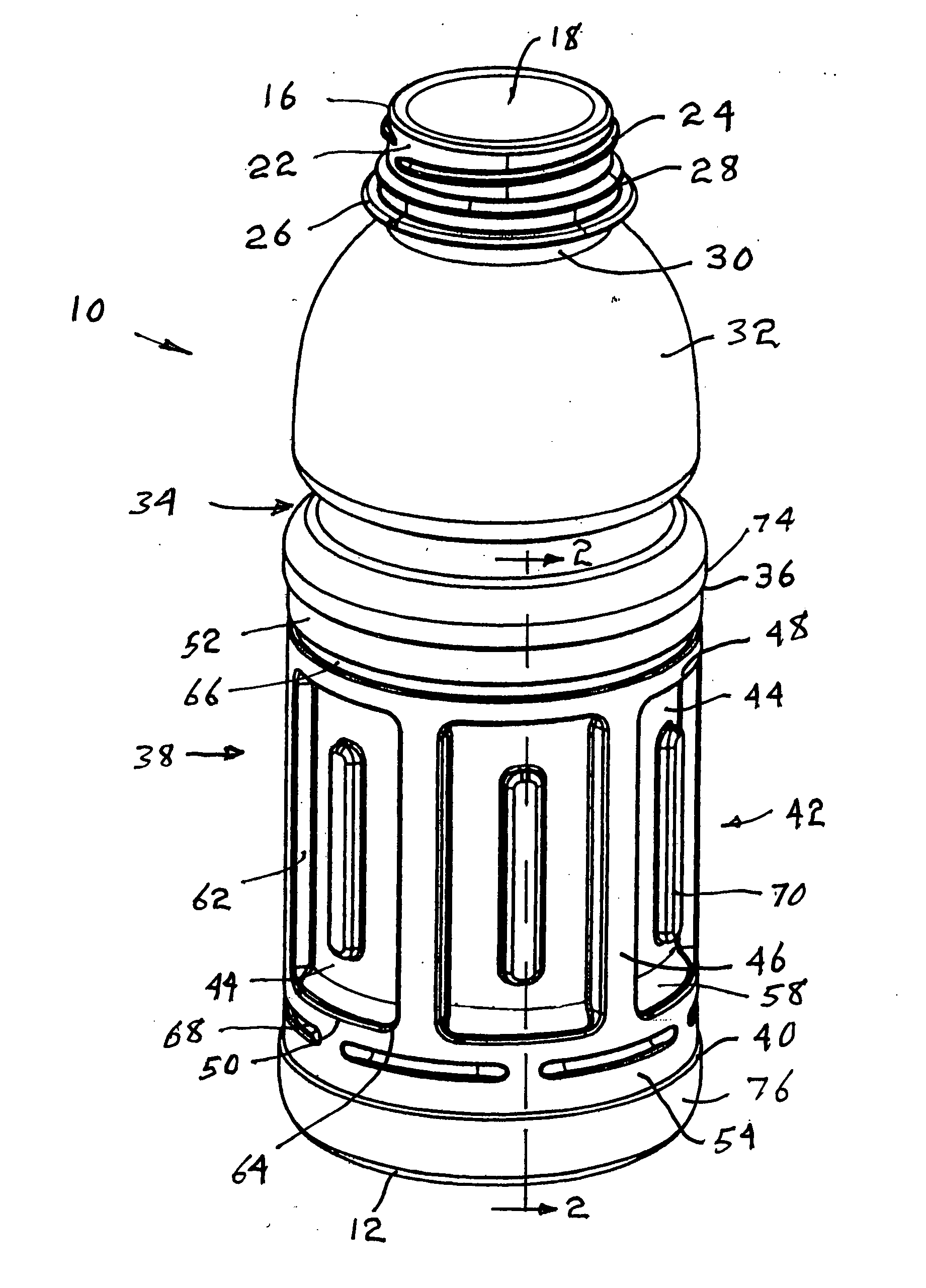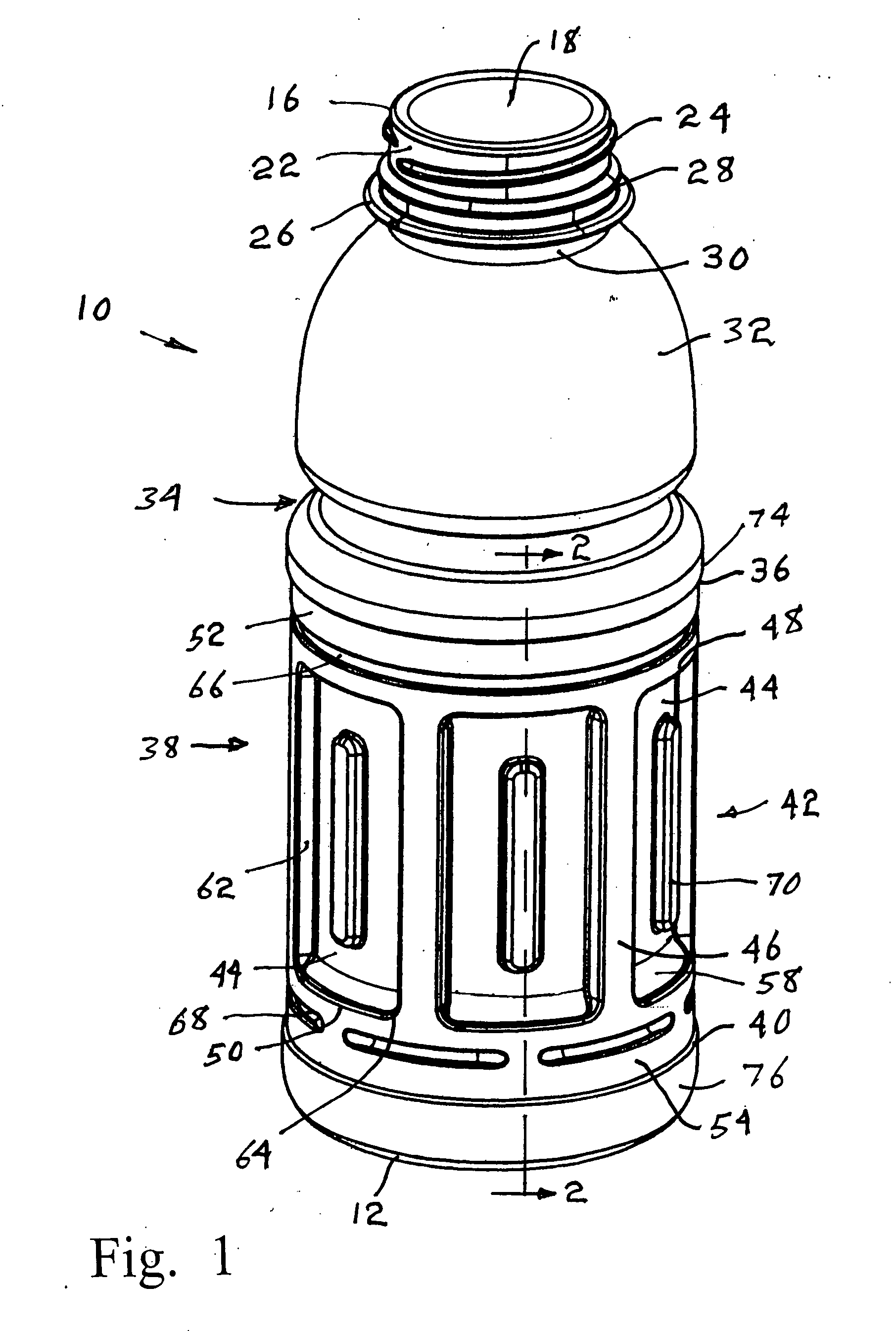Hot fill container with restricted corner radius vacuum panels
a vacuum panel and hot filling technology, applied in the field of blow molding containers, can solve the problem of reducing the opportunity for vacuum induced changes in the conformation of the central portion of the vacuum panel to propaga
- Summary
- Abstract
- Description
- Claims
- Application Information
AI Technical Summary
Benefits of technology
Problems solved by technology
Method used
Image
Examples
Embodiment Construction
[0014] A thin-walled hot-fill container 10 of the present invention is shown in FIGS. 1, 2 and 4 to include a base 12 on a lower end 14 for generally supporting the container on any underlying substrate such as a shelf or table. An upper end 16 of the container 10 includes an open mouth 18 leading to the interior 20 of the container 10. The mouth 18 is surrounded by a finish 22 that is shown to include a thread 24 for receiving a threaded cap, not shown. A support ring 26 is located at a lower margin of the finish 22, and a pilfer-indicating band engagement ring 28 is located just above the support ring 26. A neck portion 30 is located immediately below the support ring 26. A shoulder portion 32 including a manual grip indention 34 is unitarily joined to the neck portion 30. The shoulder portion 32 is joined by margin 36 to a side wall portion 38 that extends from the shoulder portion 32 down to another margin 40 joining the side wall portion 38 to the base 12. The base 12, margins ...
PUM
 Login to View More
Login to View More Abstract
Description
Claims
Application Information
 Login to View More
Login to View More - R&D
- Intellectual Property
- Life Sciences
- Materials
- Tech Scout
- Unparalleled Data Quality
- Higher Quality Content
- 60% Fewer Hallucinations
Browse by: Latest US Patents, China's latest patents, Technical Efficacy Thesaurus, Application Domain, Technology Topic, Popular Technical Reports.
© 2025 PatSnap. All rights reserved.Legal|Privacy policy|Modern Slavery Act Transparency Statement|Sitemap|About US| Contact US: help@patsnap.com



